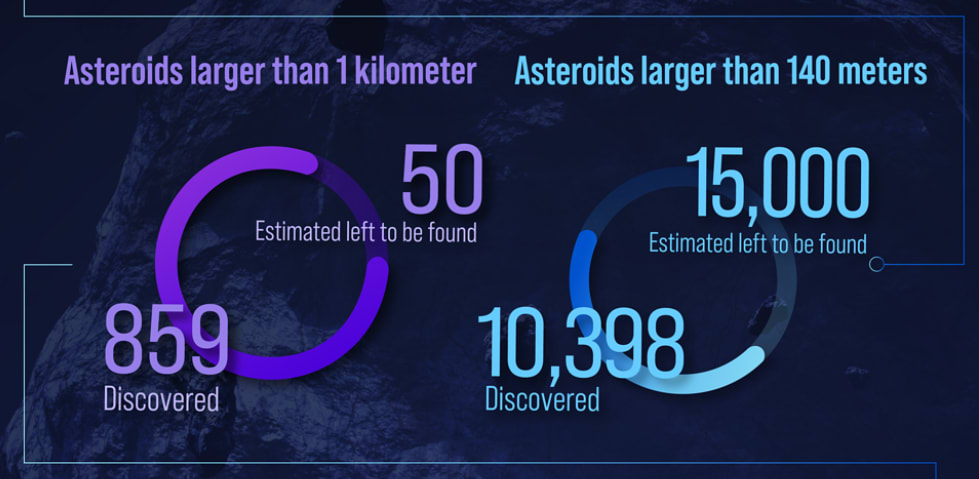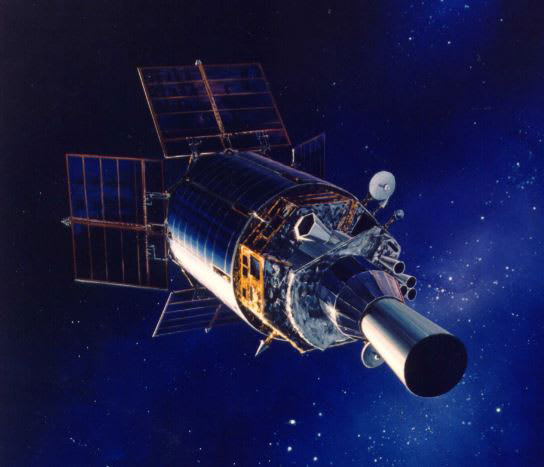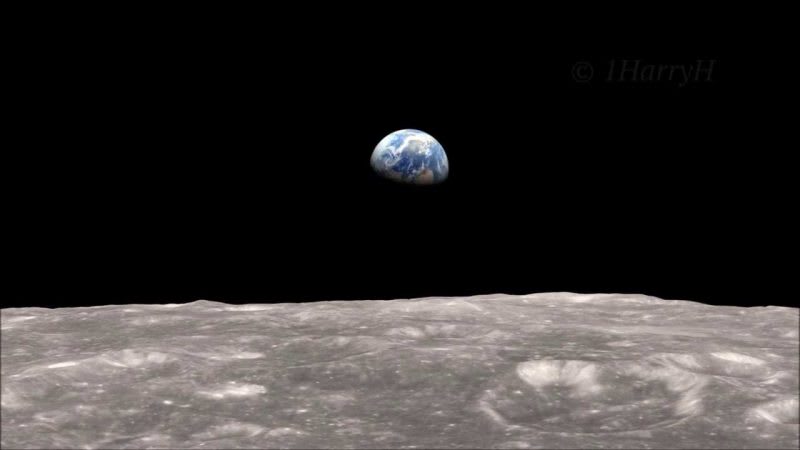This post is a series of shallow dives into areas where space and existential risk intersect, and should serve as a starting point for EAs interested in space and existential risk. Last updated: 2nd October 2025.
Asteroid impacts
Fin has summarised the risks from asteroid impacts very well here. Asteroid impacts have been handled better than any other existential risk. Most >1 km Near-Earth asteroids have been detected and catalogued, and a mission has been launched to test a deflection mission. The main threats that remain in my opinion are:
- Comets. Comets are hard to detect because they can spend decades in the outer Solar System, and then dive into the inner solar system at extremely high speeds. So there could be some that we haven't detected yet that would have devastating impacts on Earth if they hit.
- Artificial activities. Asteroid mining companies are starting up and plan to approach potentially hazardous asteroids (PHAs). These are asteroids that travel within 0.05 AU of Earth, and any alterations to their orbits from landing on them or mining them could nudge them into more hazardous orbits. I wrote a detailed post about it here.
Back to natural asteroid impacts... as of October 2025, 877 out of an estimated 909 asteroids larger than 1km diameter have been identified. The NEOWISE mission is currently picking up the stragglers, and all NEAs should be discovered by 2046 - this target seems realistic and achievable and is based on a very good track record from this community. Many small asteroids (<140 meters) are still yet to be discovered, but they do not pose an existential threat, so are of less interest to the longtermism community (I haven't done the EV calculation, but it looks like bed nets are a better bet for saving lives than protecting Earth from <140 meter asteroids).

NASA demonstrated their ability to deflect asteroids by crashing the DART mission into an asteroid and measuring the change in the asteroid's orbit around its parent asteroid. A follow-up mission is planned to investigate the crater left by the DART mission and to understand the impact of the asteroid's composition on the deflection mission. Missions from Japan and the USA to return samples from asteroids also help (Hayabusa2 from Japan and OSIRIS-Rex from NASA) to better predict the composition of incoming asteroids before launching deflection missions, as an asteroid's composition significantly impacts its deflectibility.
Space agencies representing all major great powers meet regularly to discuss the threat of asteroid impacts in an organisation called the Space Mission Planning and Advisory Group (SMPAG). And all observatories that are searching for asteroids around the World are coordinated as part of the International Asteroid Warning Network (IAWN).
The best way to get engaged with planetary defense if you aren't already is probably to submit a proposal to the Schweickart Prize (https://www.schweickartprize.org/). Your initial proposal to mitigate threats from asteroid impacts only needs to be 500 words long, and the prize is $10,000. You also get loads of intros to space experts and a media campaign, so it's a good opportunity to get more long-term future-focused ideas in the space and planetary defense community. I won it last year so it can't be thaaaat hard!
Great Power Conflict and Collaboration
From this post on great power conflict:
Economic growth and technological progress have bolstered the arsenals of the world’s most powerful countries. That means the next war between them could be far worse than World War II, the deadliest conflict humanity has yet experienced.
So boosting mechanisms that decrease the probability of a great power conflict is very important.
Hostility between Russia and the USA, China and the USA, and China and India, is increasing.
Many international space organisations exist that bring together all great powers. For example, the Space Mission Planning and Advisory Group (SMPAG) meets regularly to discuss the threat of asteroid impacts. Space agencies representing Russia, the USA, China, India, Ukraine, Israel, Europe, and many others are all members, and most attend meetings regularly. This is similarly true of many other organisations such as UNOOSA, SGAC, ISECG, and UNCOPUOUS. Building on and learning from this international collaboration to foster international cooperation on tackling x-risks like AI and biotech could be tractable. Despite Russia's recent invasion of Ukraine, the USA and Russia continue to collaborate on the International Space Station.
One perspective is that this is a powerful signal that builds trust and may help smooth diplomatic relations between these great powers. But my instinct is that collaboration in space is at the whims of global geopolitics. For example, the European Space Agency planned to launch a rover (ExoMars) to Mars on a Russian rocket. However, due to Russia's invasion of Ukraine, it was ousted from the mission, and ExoMars has been shelved until 2028 (probably later). It is unlikely that a rover mission played a huge role in Putin's decision to invade Ukraine.
Concerningly, areas in space like the moon and the cislunar domain are strategic territories that may open up new avenues for conflict between great powers. The US-China Economic and Security Review Commission recently advised the US Congress that China was planning "to control access to the moon for strategic aims". Additionally, DARPA (overseen by the US Security Council) has been funding various projects involved in development on the moon, see LunA-10 and NOM4D. Both countries claim that their space projects are for peaceful purposes, and that's probably true... but these projects definitely wouldn't hurt if there was a conflict over space territories. Ensuring that stronger policy is in place to prevent conflict over strategic territories in space is needed, but historically very challenging to pull off.
So overall, from my perspective the main area of focus at the intersection of great power conflict and space is ensuring that conflicts do not extend to, or arise in, space. Tractable work on this would be to solve issues like "How do you claim a location for a lunar base?" and "How can countries agree on mining and using space resources?". Currently there is little agreement (especially between China and the USA) on these issues.
Nuclear War
The space community can work on reducing the risk of nuclear war directly by employing the immense power of earth observation satellites. The development and testing of nuclear weapons technologies are easily monitored from space through various methods, including direct imagery (searching for craters from testing or by monitoring facilities), detecting spectral signatures of uranium activity, and detecting radiation.
Additionally, satellites are able to generate robust missile detection systems. The US Air Force uses Defense Support Program (DSP) satellites, which play a key role in the detection of missile launches, space launches, and nuclear detonations. These satellites help deter the use of nuclear weapons by ensuring that countries have sufficient time to retaliate before being hit by nuclear weapons. Additionally, robust detection systems prevent detection errors, which have already nearly caused nuclear war on multiple occasions.

An image of a DSP satellite monitoring for missile launches, space launches, and nuclear detonations.
Similarly to asteroid deflection, technology in this area is extremely advanced and (with the USA's extraordinary military budget) is not neglected. So, working directly on these technologies in the space sector is unlikely to have a large impact unless you have very specific expertise. Instead, leveraging these technologies and data to implement policy changes and scrutinise the proliferation of nuclear weapons is likely to be where the impact lies.
Climate Change
Climate change is a potential contributor to existential risk, and the space community is a leading community in the fight against climate change. The ways that the space community tackles issues relating to climate change are vast:
- Earth Observation. This is the biggest and most obvious impact of the space community on climate change. Satellites monitor sea level rise, emissions, destruction of natural ecosystems, temperature, climate etc. This data is so essential for implementing measures to prevent impacts and create new policies.
- Planetary Science. By researching other planets, we can understand our own better. For example, Venus is 475 degrees celsius at the surface; this is due to a runaway greenhouse effect, which would be an existential threat if it were to happen on Earth. It won't. Not for a billion years at least. But it warned us of the power of positive feedback loops to cause large and unexpected temperature increases e.g. the release of CO2 from permafrost.
- Sustainability and spin-off technologies. The harsh resource-limited void of space encourages engineers to invent new technologies for sustainable living, such as solar cells. These technologies bleed down into society. I'd suggest taking some time to check out NASA spinoffs: https://spinoff.nasa.gov/
The space sector is an extremely valuable resource for technology to monitor and adapt to climate change, and will inevitably support EAs working on climate change.
Philosophy
Conclusions from astrobiology are important for inspiring action towards tackling existential risks:
- Research conclusion: The universe and our Solar System are full of habitable celestial bodies. Moral implication: The number of potential future humans is huge in the long term future, so we ought to protect these people through research into existential risks.
- Research conclusion: The universe seems to be empty of life. Moral Implication: Life on Earth is extremely valuable, so ensuring its survival should be the highest moral priority.
- Research conclusion: Planets like Earth are extremely rare and far away. Moral implication: "there is no planet B" - we ought to protect our Earth for the next ~1000 years as there is no backup plan
Other philosophical implications from space come mainly from perspective shifts. There's a cool thing called the 'overview effect', where people who have travelled to the moon or the ISS and looked back on Earth have described a feeling of unity with all life on Earth. Famous images from space like 'Earthrise' or 'the pale blue dot' offers similar perspective shifts, helping people to see the bigger picture.

Earthrise. Taken from the moon, the image shows Earth rising from the moon's surface.

Taken by the voyager 1 probe, the famous 'pale blue dot' image shows Earth as a tiny dot in the distance. If this can't help people see the bigger picture and the insignificance of our Earthly squabbles, I don't know what can.
NASA is able to share these images with the world, inspiring many people to pursue careers that take into account the bigger picture.
Planetary Protection
The space community plans to return samples from Mars in 2026. Some have warned of the threat of returning potential alien life back to Earth. Similar to the release of ancient pathogens from melting permafrost, our human biology will be presented with an unknown organism that could cause a pandemic. The likelihood seems extremely low. Nevertheless, the prevention of contamination will be taken very seriously, with a purpose-built facility being constructed to house the samples from Mars and prevent any contamination to the surrounding area.
Cosmic threats
Cosmic threats are numerous and often under-researched, but in general they are extremely low probability events with a high potential to destroy everything. Solar flares, supernovae, gamma-ray bursts, and asteroids could severely damage technology and infrastructure. Though unlikely in the next 100 years, effects may be devastating. Intelligent alien life or self-replicating alien technology could potentially lead to human extinction, but probabilities are essentially unknown. Cosmic phenomena like vacuum decay, magnetar flares, and explosions from the Galactic core are severe but speculative threats.
New cosmic threats are frequently being discovered, so continued research and observation are warranted, even if probabilities are very low currently. Some known events like the Sun's increasing luminosity pose long-term existential threats.
Overall probability estimates for cosmic threats in the next 100 years seem to range from 0.00001% to 1%, but some probabilities are unknown and new threats may emerge.
For a more in-depth view, head to an exhaustive list of cosmic threats
Spacefaring civilisation
I don't think colonising Mars will save us from existential risk this century. AI could travel between worlds, nuclear war could not make Earth less habitable than Mars, islands are probably safer than Mars during a pandemic, asteroid impacts are well-managed, and cosmic threats would impact Mars too.
However, in the long term, a spacefaring civilisation (hopefully after some time for reflection) will be more hardy in response to existential threats than an Earthbound civilisation.
I wrote a post about existential risks to a spacefaring civilisation extending even to a galactic civilisation: https://forum.effectivealtruism.org/posts/x7YXxDAwqAQJckdkr/interstellar-travel-will-probably-doom-the-long-term-future
Summary
Overall, the space community has been identifying existential risks, solving them, inventing new technologies to tackle them for some time. Also, if there are any more existential threats to emerge, there's a good chance they'll emerge from the infinite expanse of space (just check out my list of 100 cosmic threats).
The space community successfully contributes to mitigating existential risk on Earth and in space. However, members of the space community should collaborate more closely with people working on existential risks. EAs working on existential risk should view the space community as a valuable scientific, technological, and philosophical powerhouse of resources for tackling existential risks, with a track record of efficiency, openness and international collaboration.
